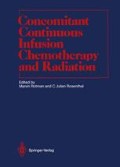Abstract
High grade gliomas represent 40%–50% of primary intracranial tumors, and the prognosis for these patients remains poor, with a median survival time of <1 year (Karlsson and Brady 1987). The Brain Tumor Study Group’s clinical trial, BTSG 69–01, was the first randomized trial to show that postoperative radiation therapy significantly increased median survival time in patients with high grade gliomas when compared with neurosurgical treatment alone (Walker et al. 1978). Although the quality of life in these patients treated with high dose radiation therapy is acceptable, the vast majority of patients succumb to their tumors within 1 year from the termination of treatment. Since the observation over 30 years ago that poorly oxygenated cells are approximately two to three times more resistant to radiation, many attempts have been made to overcome this relative radioresistance of the radiobiologically hypoxic cells thought to exist in many human tumors. A recent study examining the patterns of failure following radiation treatment for high grade brain tumors revealed that 78% of unifocal tumors recurred within 2 cm of the enhancing edge of the tumor, as demonstrated by the CT scan (Wallner et al. 1989). This study highlights the failure of high doses of radiation to sterilize pockets of presumably radiobiologically hypoxic cells. It has been hypothesized that either the tumor has outgrown its blood supply or the external pressure of the tumor has caused capillaries to become collapsed. The failure, therefore, of radiotherapy in the treatment of high grade gliomas has been attributed, at least in part, to the presence of radiobiologically hypoxic areas (Nelson et al. 1986).
Access this chapter
Tax calculation will be finalised at checkout
Purchases are for personal use only
Preview
Unable to display preview. Download preview PDF.
References
Karlsson UL, Brady LW (1987) Primary intracranial neoplasms. In: Perez CA, Brady LW (eds) Principles and practice of radiation oncology. JB Lippincott, Philadelphia, pp 408–436
Kayama T (1988) A study of intratumoral oxygen pressure in brain tumors. In: Suzuki J (ed) Treatment of glioma. Springer, Tokyo Berlin Heidelberg New York, pp 125–133
Lustig R, Mclntosh-Lowe N, Rose C, Haas J, Krasnow S, Spaulding M, Prosnitz L (1989) Phase I/II study of Fluosol®-DA and 100% oxygen as an adjuvant to radiation in the treatment of advanced squamous cell tumors of the head and neck. Int J Radiat Oncol Biol Phys 16: 1587–1593
Miller PJ, Hassanein RS, Giri PGS, Kimler BF, O’Boynick PL, Evans RG (1990) Univariate and multivariate analysis of the response of highgrade gliomas to radiation therapy. Int J Radiat Oncol Biol Phys 19: 275–280
Nelson DF, Urtasun RC, Saunders WM, Gutin PH, Sheline GE (1986) Recent and current investigations of radiation therapy of malignant gliomas. Semin Oncol 13: 46–55
Salazar O, Rubin P, McDonald J, Feldstein M (1976) Patterns of failure in intracranial astrocytomas after irradiation: analysis of dose and field factors. Radiology 126: 279–292
Song CW, Zhang WL, Pence DM, Lee I, Levitt SH (1985) Increased radiosensitivity of tumors by perfluorochemicals and carbogen. Int J Radiat Oncol Biol Phys 11: 1833–1836
Teicher BA, Rose CM (1984) Oxygen-carrying perfluorochemical emulsion as an adjuvant to radiation therapy in mice. Cancer Res 44: 4285–4288
Walker MD, Alexander E, Hunt WE, MacCarty CS, Mahaley MS, Mealey J, Norrell HA, Owens G, Ransohoff J, Wilson CB, Gehan EA, Strike TA (1978) Evaluation on BCNU and/or radiotherapy in the treatment of anaplastic gliomas. A cooperative clinical trial. J Neuro- surg 49: 333–343
Wallner KE, Galicich JH, Krol G, Arbit E, Malkin MG (1989) Patterns of failure following treatment for glioblastoma multiforme and anaplastic astrocytoma. Int J Radiat Oncol Biol Phys 16: 1405–1409
Author information
Authors and Affiliations
Editor information
Editors and Affiliations
Rights and permissions
Copyright information
© 1991 Springer-Verlag Berlin Heidelberg
About this chapter
Cite this chapter
Evans, R.G., Kimler, B.F., Morantz, R.A., Vats, T.S., Liston, V., Lowe, N.L. (1991). Perfluorocarbon Emulsion and Oxygen with Concomitant Radiation Therapy in Primary High Grade Brain Tumors. In: Rotman, M., Rosenthal, C.J. (eds) Concomitant Continuous Infusion Chemotherapy and Radiation. Medical Radiology. Springer, Berlin, Heidelberg. https://doi.org/10.1007/978-3-642-84186-6_11
Download citation
DOI: https://doi.org/10.1007/978-3-642-84186-6_11
Publisher Name: Springer, Berlin, Heidelberg
Print ISBN: 978-3-642-84188-0
Online ISBN: 978-3-642-84186-6
eBook Packages: Springer Book Archive

